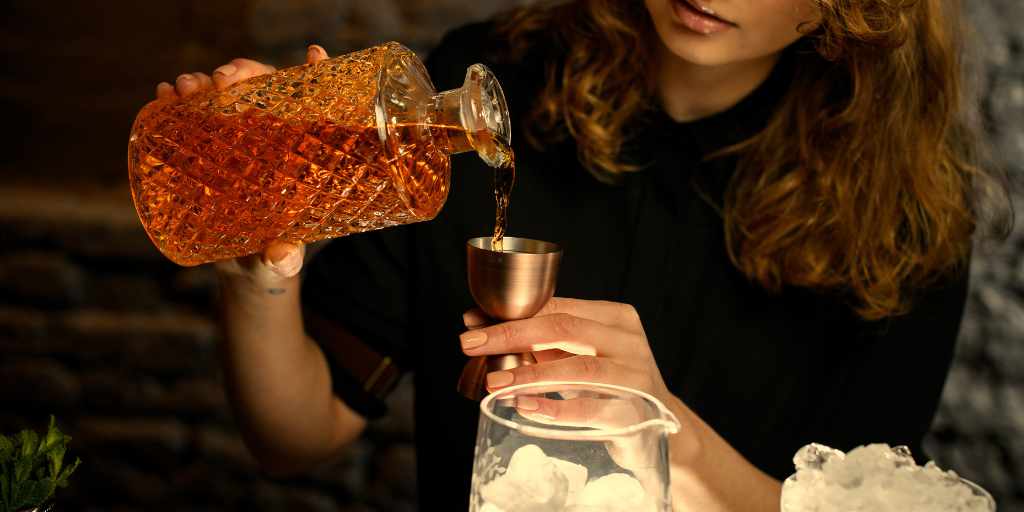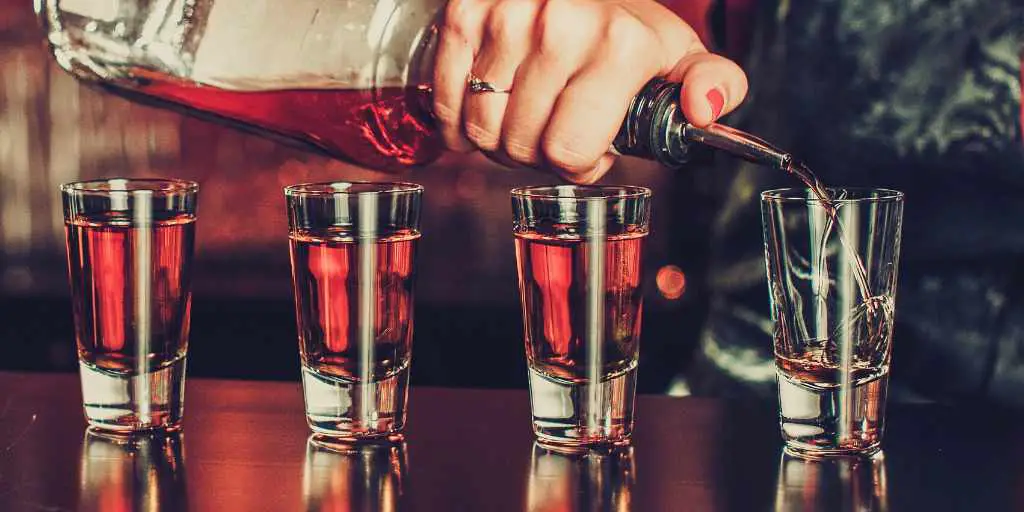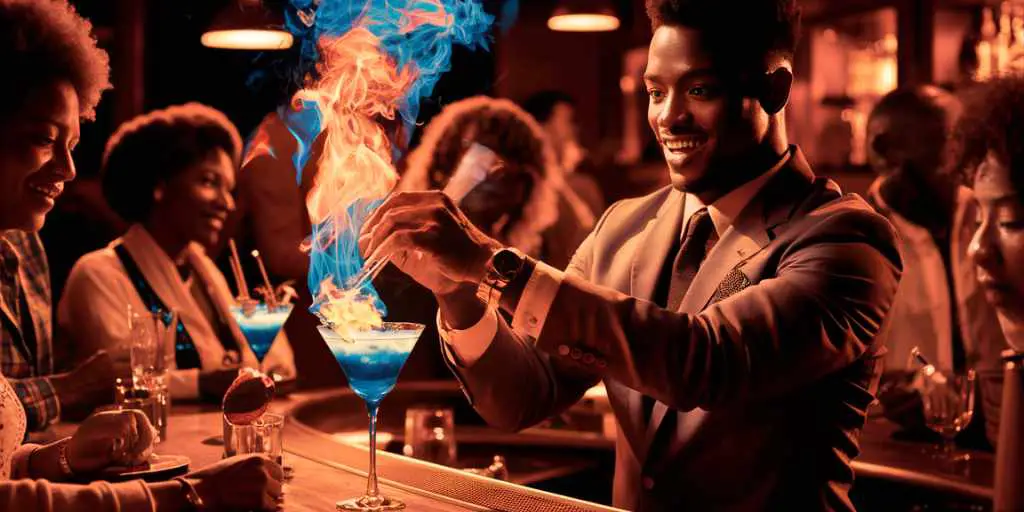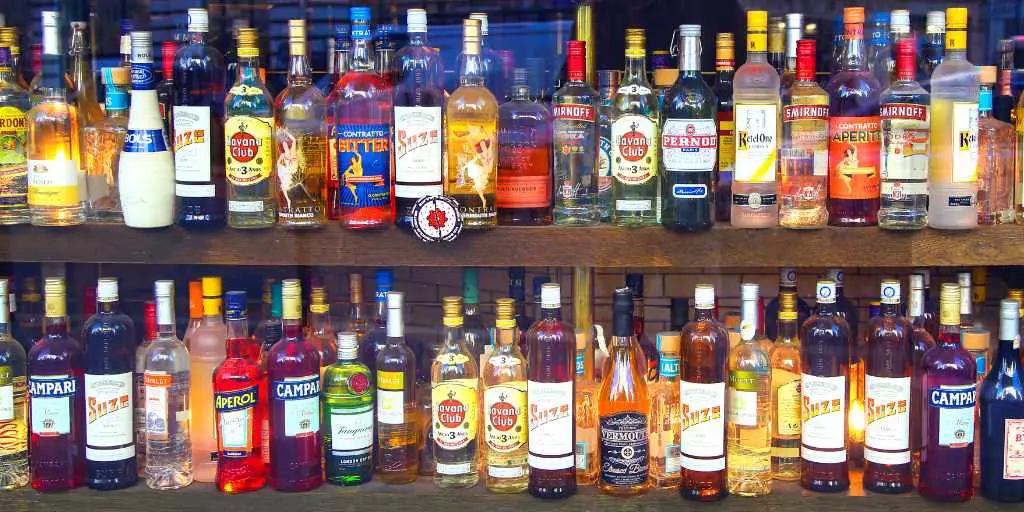Understanding the standard pour is essential for professional bartenders and home enthusiasts when preparing mixed drinks. The standard pour is the amount of liquor typically used in a single mixed drink, and it helps ensure consistency in taste and strength across cocktails. Several factors are considered when determining the standard pour, including the type of drink being made and the serving glass size.
What is the standard pour in a single mixer cocktail?
In general, cocktails featuring one type of liquor mixed with other non-alcoholic ingredients tend to follow the widely accepted pour of 1.5 ounces (44ml) of alcohol. This measure can, however, vary depending on the specific drink recipe, the desired alcohol content, or even regional preferences.
Key Takeaways
- The standard pour is a crucial component for consistency in mixed drinks.
- A standard pour is approximately 1.5 fluid ounces of alcohol or about 44ml.
- Various factors influence the standard pour, including cocktail type and personal preference.
Standard Pour Definition
When discussing cocktails, one often encounters the term standard pour. This refers to the quantity of liquor used in a cocktail recipe to balance strength, flavour, and volume. Generally, the standard pour is 1.5 ounces of alcohol. This measurement equates to one shot or one jigger, which is a common bartending tool used to measure liquid ingredients accurately.
The standard pour is crucial in the art of mixology for several reasons:
- Consistency: It ensures that every cocktail tastes the same, regardless of who makes it.
- Control: It helps bartenders manage inventory and limit overpouring.
- Guideline: It serves as a foundation for creating and modifying new cocktails.
It’s important to note that while a standard liquor pour of 1.5 ounces is typical, some establishments may define their standard pour slightly differently due to various factors, such as the type of spirit or the specific cocktail being made. For example, in a single mixer cocktail — a drink comprising one type of liquor combined with one type of non-alcoholic mixer — adhering to the standard pour ensures the intended flavour profile is achieved without overpowering the mixer.
Determining Factors for a Standard Pour
The standard pour in cocktails is influenced by two primary factors: the alcohol content of the base spirit and the type of cocktail being served. Understanding these aspects ensures that a cocktail is balanced in flavour and strength.
Alcohol Content
The alcohol content, or proof, of the bottle of the spirit being used, is critical in determining the standard pour. Higher-proof alcohols may require a smaller pour to achieve the desired balance and to maintain the responsible serving of alcohol. A standard pour is 1.5 ounces of a base spirit, generally around 40% alcohol by volume (ABV).
The more alcohol you add, the more mixer you’ll need to balance the drink out, and vice versa. Debates persist over the ideal ratio of spirit to mixer, with some suggesting a stronger 1 to 2 ratio while others recommend a milder 1 to 3 or 1 or 4.
Cocktail Type
Each cocktail type follows a guideline matching the flavour profile and strength intended for that drink. For example, a standard pour for a Long Island Iced Tea, which contains multiple spirits, might differ from that of a simpler cocktail like a Gin and Tonic. The latter often uses a fixed standard pour of 1.5 ounces of gin with a larger volume of tonic water to create a harmoniously flavoured beverage.
Know Your Glassware
Different kinds of glass will hold different amounts so you should know the amount the glass holds. For example, a standard rocks glass typically holds around 8-10 ounces of liquid, whereas a glass with a high-ball capacity can contain about 4-6 ounces weighing about 125 to 200 pounds. Understanding the size of the glass can be helpful in knowing the amount of each ingredient required.
Differences in Cocktails and Liquor Types
Standard pours may differ depending on the type of drink. Highballs and old-fashioned cocktails have a unique pour standard. It is also influenced by what liquor is served. The standard pours of spirits depend on the strength of the liquor and the cocktails in which they were mixed.
Measurement Techniques
Accurate measurements are crucial in cocktail-making to ensure consistency and balance in flavour.
How to Measure a Standard Pour in a Single Mixer Cocktail?
The industry standard pour for a single mixer cocktail is 1.5 fluid ounces. This can be precisely measured using a jigger, which is a double-ended tool that typically has a one-ounce measure on one side and a 1.5-ounce measure on the other. To measure, one should fill the jigger to the brim for an accurate amount.
We’ve written an article on types of jiggers and their pros and cons here.
Can you use a Shot Glass if I don’t have a jigger?
In the absence of a jigger, there are alternative methods. One tool you’ll have at hand is a shot glass that holds 1.5 oz when filled to the lip. Or maybe use a tablespoon, with one fluid ounce equaling approximately two tablespoons.
Counting can also serve as a guide; a practised pour equating to a one-ounce shot typically takes about three to four seconds. For a 1.5-ounce pour, aim for about four to six seconds. However, these methods are less exact and may require practice for consistency.
Speed Pourers
A speed pourer is a metal spout that attaches to the top of your liquor bottle and allows you to make an accurate pour faster and more smoothly and ensures consistency.
We have an article on using speed pourers here.
Industry Standards
In the beverage industry, the standard pour for a single mixer cocktail tends to be a critical factor for consistency, cost control, and ensuring the expected taste experience for customers. Typically, the standard pour involves measuring out 1.5 ounces of the base spirit. This measure is equivalent to one shot or one jigger and is used across various types of spirits, from vodka to whiskey.
Establishments may adjust the pour based on factors such as the alcohol’s strength, the desired flavour profile, or the type of drink being served. The ratio of spirit to mixer is crucial for mixed drinks, such as highballs or simple cocktails with one mixer.
Adhering to these standards helps maintain the integrity of the cocktail’s flavour while also managing inventory and cost for the establishment. Individual recipes may call for variations, but they are generally built upon this foundational understanding of the standard pour within the industry.
Frequently Asked Questions

In cocktail crafting, understanding the specifics of a standard pour is key for both bartenders and enthusiasts. These frequently asked questions address the common queries regarding measurement and mixing techniques used for single-mixer cocktails.
How is a standard shot volume measured for cocktails?
A standard shot volume for cocktails is typically measured using a jigger, a tool that comes in various sizes, the most common being 1.5 ounces. This is the accepted amount for a single shot in many recipes.
What is the typical ounce measurement used for single mixer cocktails?
The typical ounce measurement for a single liquor pour in cocktail mixing is about 1.5 ounces. This quantity is considered a standard across many establishments and is used to maintain consistency in the strength of cocktails.
How can a bartender accurately measure a standard pour without a jigger?
Through practice and mastering the free pour, bartenders can accurately measure a standard pour without a jigger. This involves counting uniformly, corresponding to the desired ounces, and using pour spouts that allow for a consistent flow rate.
What is the relationship between pour count and ounces in drink mixing?
In drink mixing, pour count refers to the number of seconds a bartender pours the liquor, with each count usually equaling roughly one-quarter of an ounce. This implies that a standard 1.5-ounce shot would have a pour count of approximately six seconds.
How does the free pour technique correspond to specific volume measurements?
The free pour technique corresponds to specific volume measurements by relying on a count system where the bartender counts out the seconds while free pouring. With a consistent pouring speed, each count represents a fraction of an ounce, facilitating a measured pour without using a measuring device.
What quantity of mixer should be added to a standard single shot of liquor in a cocktail?
For a standard single shot of liquor in a cocktail, the quantity of mixer can range from 4 to 6 ounces, depending on the desired taste and strength of the drink. This ratio balances the cocktail, ensuring that the flavor of the liquor is complemented by the mixer.




